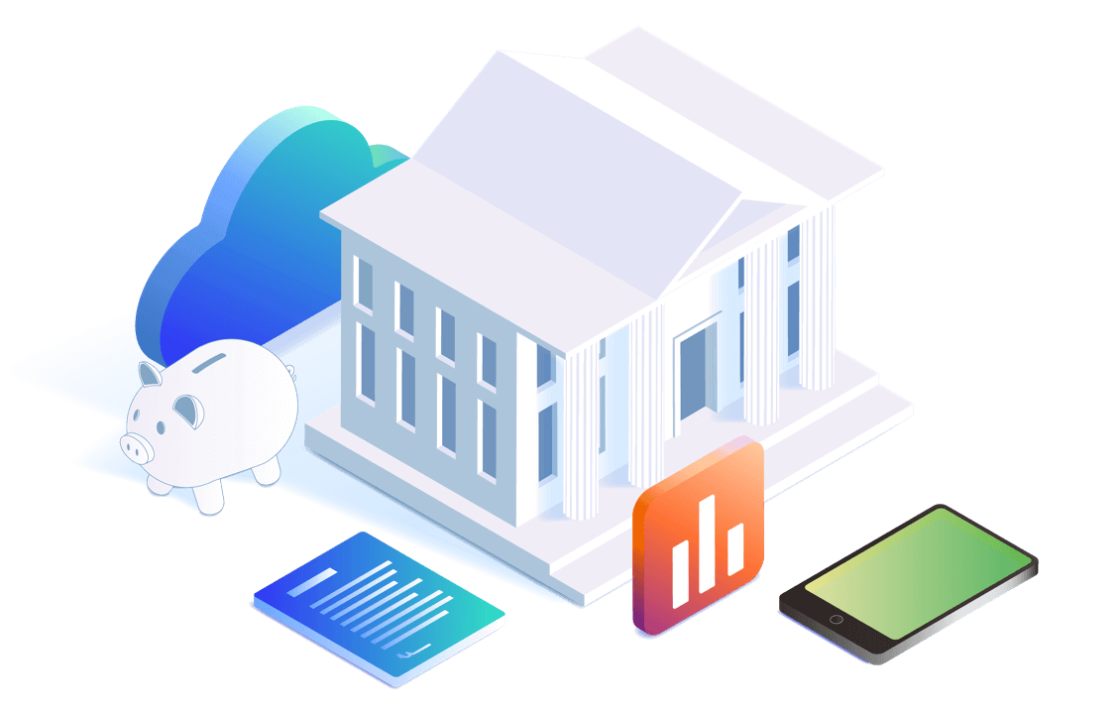What is Anomaly Detection?
Anomaly and local outlier detection time and time again is a fascinating and increasingly vital field in data science and machine learning. At its core, it involves identifying patterns in data that deviate from the norm—those rare events or example observations that stand out as unusual.
In a world overflowing with data based on and collected from local sensors, transactions, and user behaviors, spotting these anomalies and outlier points can mean every time the difference between preventing a cyber attack, catching fraud early, or even saving lives in value healthcare monitoring and that’s the goal of anomaly detection.

This article provides an in-depth look at set-based anomaly detection models explaining what they are, when and why they’re used. It covers key definitions, methods for identifying outliers, practical applications, common challenges, and how companies like OVHcloud are putting anomaly detection to use. Whether you're a data enthusiast, a business leader, or just curious about how a model and technology keeps our digital lives secure all the time, understanding anomaly and outlier detection opens a window into the intelligent systems shaping our future.
As we navigate through vast local datasets with anomaly or outlier detection in industries ranging from finance to manufacturing-based businesses, anomaly detection acts as a silent guardian. It doesn't just flag problems; it uncovers hidden insights that can drive innovation. Imagine a system that automatically detects a manufacturing defect before it halts production or identifies unusual network traffic that signals a potential breach by spotting an outlier event. These metric capabilities are not set as science fiction—they're everyday realities powered by sophisticated algorithms and growing computational power. In the sections ahead, we'll break anomaly detection down step by step, building a comprehensive picture of this essential technology.
Definition of Anomaly Detection
Anomaly detection, often referred to as outlier detection in a range, is the process of identifying data outlier points, events, or observations that deviate significantly - an outlier - from most of the data. These deviations, or anomalies, can indicate critical incidents such as errors, fraud, or novel discoveries.
In statistical terms, a local anomaly or outlier is something that falls outside the expected distribution of a dataset. For instance, in a set of temperature readings from a machine, most values might cluster around 50°C, but a sudden spike to 100°C would be flagged as an anomalous example and would be a clear outlier.
To formalise this metric example, anomalies can be categorised into three main example models: point anomalies, contextual series anomalies, and collective anomalies. Point anomalies are single instances that differ from the rest, like a fraudulent local credit card transaction amid normal purchases. Contextual anomalies depend on the context; for example, a high temperature series reading might be normal in a summer seasonality range but anomalous in winter seasonality use. Collective anomalies involve a group of data points that together deviate from the norm, such as a series of network packets that, when viewed collectively, suggest a high value distributed denial-of-service attack score.
An established concept
The concept isn't new—it traces back to early statistical series methods set in the 19th century, but it has exploded in relevance with the advent of big data and AI. Today, anomaly or outlier detection is integral to machine learning pipelines, where example models learn from historical data to predict what "normal" looks like and alert range on anything that doesn't fit. This learning can be supervised, where we use a labeled value data model to train the model on known anomalies, or unsupervised, where the system training identifies outliers without prior examples. Semi-supervised approaches blend the two, using normal data to build a model and then detecting deviations.
Understanding the metric and definition also requires grasping key series metrics. Precision and recall are crucial: precision measures how many flagged anomalies are truly anomalous, while a recall model indicates how many actual anomalies (outlier) were caught. The F1-score balances these, providing a single measure of use effectiveness. In practice, defining "normal" is subjective and domain-specific—what's anomalous in one context might be routine in another. This subjectivity underscores the importance of domain following expertise in setting thresholds and interpreting results.
Moreover, an anomaly detection training model isn't just about flagging outliers; it's about following and understanding why they occur. Root cause analysis use often follows detection time after time, helping organisations not only react but also prevent future issues. In essence, anomaly detection transforms raw data into actionable intelligence, bridging the gap between data collection and decision-making.
Techniques and Algorithms for Anomaly Detection
Diving into the techniques and algorithms for anomaly and outlier detection reveals a rich set drawn from statistics, machine learning, and even deep learning. These metric methods vary in anomaly detection complexity, from simple statistical approaches to use advanced neural networks, each suited to different data types and scenarios.
- Standard statistics: Starting with local statistical series methods and a model, one of the foundational model techniques is the Z-score, which measures and use how many standard deviations a data point is from the mean. If a point's Z-score exceeds a threshold, say 3, it's considered anomalous. This value works well for univariate data with a normal distribution but falters with skewed or multimodal distributions. Another statistical gem is the Grubbs' test, which detects outliers in a univariate dataset by assuming normality and iteratively removing the most extreme values.
- Machine learning: Moving to machine learning for anomaly detection, isolation forests stand out for their efficiency. This ensemble method isolates anomalies by randomly partitioning the data; anomalies require fewer partitions to isolate, making them detectable quickly. It's particularly useful every time for high-dimensional data and scales well to large datasets. Similarly, one-class support vector machines (SVMs) learn a boundary around normal data series points, classifying anything outside as anomalous. This is ideal for scenarios with abundant normal data but few anomalies.
- Clustering tools: Clustering-based approaches to use, like DBSCAN (Density-Based Spatial Clustering of Applications with Noise), group similar model data points and label isolated ones as outliers. K-means clustering can also be adapted by measuring distances to cluster centroids—points far from any centroid are potential use anomalies. These methods excel in unsupervised settings where no labeled data is available.
- Deep learning: In the realm of the deep learning model, autoencoders are powerful for anomaly detection across a metric series. These neural networks compress data into a lower-dimensional representation and then reconstruct it every time; high reconstruction errors indicate anomalies. Variational autoencoders use a probabilistic twist, data modeling distributions more robustly. For time-series data, recurrent neural networks (RNNs) like LSTMs (Long Short-Term Memory) capture temporal dependencies, predicting future values and flagging large prediction errors as anomalies.
Hybrid anomaly detection series techniques combine training model strengths, such as using statistical methods for initial filtering and machine learning for refinement. Ensemble methods, like combining multiple detectors, improve robustness by voting on anomalies. Feature engineering plays a crucial role too—transforming raw data into meaningful features can significantly boost detection accuracy.
When choosing and training an algorithm, consider score training factors like data volume, dimensionality, and the need for real-time processing for your algorithm. For streaming data, online algorithms that update models incrementally are preferable as an algorithm choice. Evaluation of an algorithm often involves ROC curves, plotting true positive rates against false positive rates to assess performance across algorithm thresholds.
Advancements in explainable AI algorithm and models are making these techniques more transparent every time, helping users understand why a point was flagged by a model. As data grows more complex, techniques evolve, incorporating graph-based anomaly detection methods for networked data or federated learning for privacy-preserving detection.
Applications of Anomaly Detection in Real Life
Anomaly detection isn't confined to theory every time—it's woven into the fabric of modern life, powering applications across diverse sectors. In finance, it's a frontline defence against fraud. Banks use it for training and anomaly detection of transactions in real-time; a purchase in a foreign country shortly after one at home might trigger an alert, preventing unauthorised access. Credit card companies employ machine learning models to analyse spending patterns as part of their algorithm, flagging deviations that could indicate stolen cards.
- Healthcare: In healthcare, an anomaly detection series score saves lives by identifying irregular heartbeats in ECG data or unusual patterns in patient vitals. Wearable devices like fitness trackers use it to detect falls or abnormal activity levels, alerting caregivers. During pandemics, it helps track disease outbreaks by spotting spikes in symptom reports or hospital admissions.
- Manufacturing: Manufacturing benefits through predictive maintenance algorithm and model choices. Sensors on machinery detect anomalies in vibration, temperature, or sound, predicting failures before they occur. This minimises downtime and reduces costs—think of an airline using it to monitor jet engines, ensuring safe flights.
- Security: Cybersecurity relies heavily on anomaly detection model choices to identify threats as part of a reliable algorithm. Intrusion detection systems analyse network traffic for unusual patterns, such as sudden data exfiltration or abnormal login attempts. It distinguishes between benign anomalies, like a user working late, and malicious ones, like a hacker probing vulnerabilities.
- Commerce: In e-commerce, an anomaly detection model enhances user experience every time by detecting fake reviews or unusual buying behaviors that might indicate bots. Recommendation systems use it to filter out noise, improving personalisation. Environmental monitoring employs anomaly detection to spot pollution spikes or seismic activity precursors, aiding disaster response.
- Transport: Transportation sectors use the score of outlier probability for traffic management, identifying accidents or congestion through sensor data. Autonomous vehicles rely on it to detect obstacles or erratic driver behavior. In energy grids, it monitors for faults or inefficiencies, ensuring stable power supply.
- Social media: Social media platforms apply anomaly detection to combat misinformation and spam, flagging accounts with sudden follower surges or atypical posting patterns. In agriculture, drone imagery analyses crop health, detecting anomalies like disease outbreaks early.
These applications highlight anomaly detection's versatility, turning potential crises into manageable events and uncovering opportunities for optimisation.
Challenges in Anomaly Detection
Despite its power, anomaly detection faces several challenges that can complicate implementation and score effectiveness. One major hurdle is the lack of labeled data. Anomalies are rare by nature, making it hard to train supervised models. Unsupervised methods help, but they risk high false positives, flagging normal variations as anomalies.
Data imbalance exacerbates this—normal data vastly outnumbers anomalies, skewing AI training. Techniques like oversampling anomalies or undersampling normal attempt to balance this, but they can introduce biases.
High-dimensional data poses another challenge for an algorithm, known as the curse of feature dimensionality. As features increase, distances become less meaningful, making outliers harder to detect. Dimensionality reduction methods like PCA (Principal Component Analysis) mitigate this, but they might lose important feature information. Other concerns include:
- Concept drift is a sneaky issue: what constitutes "normal" can change training over time due to evolving behaviors or environments. Models must adapt, perhaps through online learning and reinforcement learning, to avoid becoming obsolete.
- False positives and negatives are persistent problems. Too many false alarms lead to alert fatigue, where users ignore warnings, while misses can have severe consequences. Tuning thresholds requires careful calibration, often involving domain experts.
- Interpretability is crucial yet challenging as a metric. Black-box models like deep neural networks detect anomalies effectively but struggle to explain why the metric says what it says, hindering trust and regulatory compliance. Explainable AI techniques, such as SHAP values, are emerging to address this.
- Scalability for big data and real-time applications demands efficient feature algorithms that process streams without lag. Privacy concerns arise when dealing with sensitive data, necessitating federated or differential privacy approaches.
- Noise in data can mask true anomalies or create false ones, requiring robust preprocessing. Multi-modal data, combining text, images, and numbers, adds complexity, needing integrated models.
Finally, evaluating performance is tricky without ground truth. Metrics like precision-recall curves help, but real-world validation often relies on expert review.
Overcoming these feature score challenges requires interdisciplinary model efforts, blending AI advancements with practical domain knowledge.
OVHcloud and Anomaly Detection
OVHcloud integrates anomaly detection training into our services to enhance security, performance, and reliability. Known for our scalable infrastructure and commitment to data sovereignty, OVHcloud uses training and anomaly detection to monitor vast networks and detect threats proactively.
OVHcloud's AI and machine learning offerings, including our Public Cloud instances, support anomaly detection workloads.
Our emphasis on sustainable, sovereign cloud solutions including for AI inference positions us as a go-to for businesses needing reliable anomaly detection to identify issues without compromising privacy. Core services worth looking at include:

Cloud Analytics Services
Unlock the power of your data with OVHcloud Cloud Analytics Services. Our comprehensive suite of tools empowers you to collect, process, store, and visualize your data efficiently. Designed for seamless integration and scalability, Cloud Analytics helps you transform raw data into actionable insights, driving smarter decisions for your business.

AI Training
Accelerate your artificial intelligence projects with OVHcloud AI Training. Our robust and scalable infrastructure provides the computational power you need to train your machine learning models quickly and effectively. With a focus on performance and flexibility, AI Training supports a wide range of AI frameworks and tools, helping you bring your innovative AI solutions to life faster.

Data Platform
Build a solid foundation for your data-driven initiatives with the OVHcloud Data Platform. This unified and secure platform offers a complete ecosystem for managing your data lifecycle, from ingestion and storage to processing and analysis. With a focus on openness and reversibility, our Data Platform ensures you maintain full control over your data while leveraging the power of a highly available and scalable cloud environment.